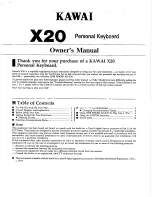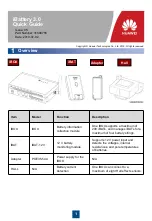
4
Basic Things You Really Need to Know
We’ll start by explaining some things about how the
Fantom-X’s recording system works. To fully understand its
many options, you’ll need to know the stuff in these sections.
If you’re eager to start recording, though, you can jump to:
•
“Clearing the Demo Song”
—on Page 8, and then to
•
“A Quickie Recording How-To”
—on Page 10.
When you get the chance, do come back and read the
following sections to get the most from this booklet and from
the Fantom-X.
Some Key Concepts for Beginners
This section is intended for people who are new to MIDI sequencing. If that’s
not you, skip ahead to “Performance Mode: Parts and Performances.”
MIDI is the language in which the Fantom-X’s various internal
components communicate. (It’s also how the Fantom-X talks
to other instruments).
Every time you play something on the Fantom-X, its keyboard,
pads or realtime controllers produce MIDI data that’s sent to
the Fantom-X’s sound generator, resulting in the sounds you
hear. There’s a MIDI message for each of your physical actions.
���������������
���������������
����������
����������
Recorder=Sequencer
When you play the Fantom-X’s keyboard and pads, manipulate
its realtime controllers, or use rhythms or arpeggios during
recording, the resulting MIDI messages are sent to the
Fantom-X’s “sequencer” in addition to being sent to the sound
generator.
���������������
���������������
����������
����������
�������
������
The Fantom-X sequencer captures all of this MIDI data and
can play it back in its original order. The result is that when
you press the sequencer’s PLAY button, it sends the MIDI data
to the Fantom-X’s sound generator, and it sounds as if you’re
playing the keyboard, pads, and so on.
It’s important to understand that though it seems like you’ve
recorded the sound of your playing, that’s not really what’s
happened. You’ve simply recorded MIDI instructions for
reproducing what you played, not the sound itself.
A chunk of music you’ve recorded using a sequencer is called a “sequence.”
Sequencing allows for incredible flexibility in refining your
music, and offers some amazing advantages for arranging,
re-voicing and editing your music, as we’ll see.





































